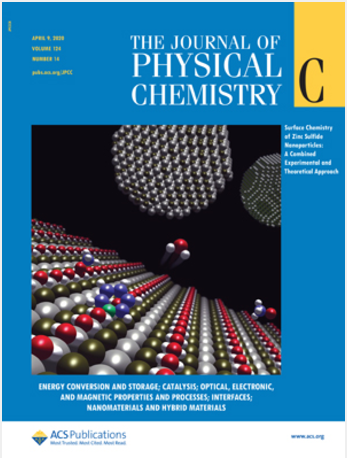Large Area Monolayer Graphene Transfer in Ultra-High Vacuum
IF 3.3
3区 化学
Q2 CHEMISTRY, PHYSICAL
引用次数: 0
Abstract
Graphene transfer methods either employ support layers that have to be removed after transfer, giving rise to impurities, or are based on delamination from bulk crystals, yielding only small flakes with various thicknesses. We present a graphene transfer method overcoming these disadvantages and working under ultrahigh vacuum. It is based on wafer bonding and uses a Teflon-supported graphene bilayer as a source. We demonstrate transfer of one graphene monolayer onto atomically clean Ir(111) and Cu(100) single-crystal surfaces over 5 × 5 mm2 large areas. Auger electron spectroscopy reveals that 70–100% of a graphene monolayer is transferred and that this layer is free from chemical defects, even within the detection limit of synchrotron-based X-ray absorption spectroscopy. Raman and X-ray absorption spectroscopy evidence high structural quality of the transferred graphene, and scanning tunneling microscopy shows the same moiré structure of graphene on Ir(111) that is obtained for chemical vapor deposition on that substrate. We show the versatility of our approach by creating a graphene bilayer on Ir(111). Our method enables us to cap entire surfaces in ultrahigh vacuum with a monolayer of clean 2D material, either for sealing them from the environment or for the creation of novel 3D metamaterials by sequential epitaxial growth and graphene transfer.

石墨烯转移方法要么采用支撑层,转移后必须去除支撑层,从而产生杂质;要么基于块状晶体的分层,只能产生不同厚度的小薄片。我们提出的石墨烯转移方法克服了这些缺点,可在超高真空条件下工作。该方法基于晶片键合,使用特氟隆支撑的石墨烯双层作为源。我们展示了在 5 × 5 平方毫米的大面积范围内,将一个石墨烯单层转移到原子洁净的 Ir(111) 和 Cu(100) 单晶表面。欧杰电子能谱显示,70%-100% 的石墨烯单层被转移,而且这层石墨烯没有化学缺陷,甚至在同步辐射 X 射线吸收光谱的检测极限之内。拉曼光谱和 X 射线吸收光谱证明转移的石墨烯具有很高的结构质量,扫描隧道显微镜显示 Ir(111) 上的石墨烯具有与在该基底上进行化学气相沉积时相同的摩尔纹结构。我们通过在 Ir(111) 上创建石墨烯双层,展示了我们方法的多功能性。我们的方法使我们能够在超高真空中用单层干净的二维材料覆盖整个表面,使其与环境隔绝,或通过顺序外延生长和石墨烯转移来创建新颖的三维超材料。
本文章由计算机程序翻译,如有差异,请以英文原文为准。
求助全文
约1分钟内获得全文
求助全文
来源期刊

The Journal of Physical Chemistry C
化学-材料科学:综合
CiteScore
6.50
自引率
8.10%
发文量
2047
审稿时长
1.8 months
期刊介绍:
The Journal of Physical Chemistry A/B/C is devoted to reporting new and original experimental and theoretical basic research of interest to physical chemists, biophysical chemists, and chemical physicists.
 求助内容:
求助内容: 应助结果提醒方式:
应助结果提醒方式:


